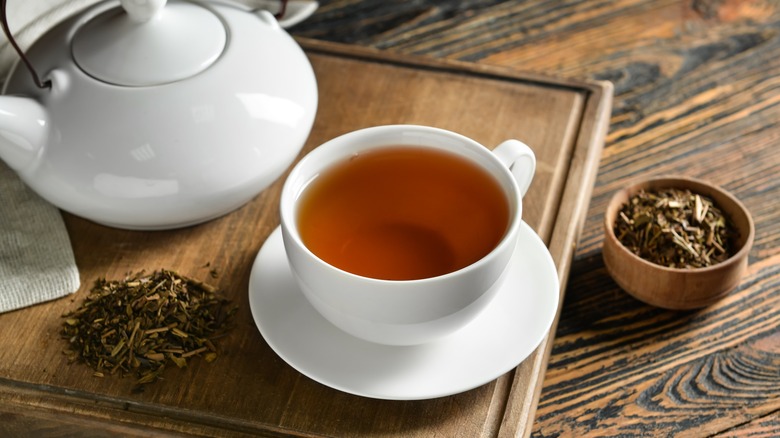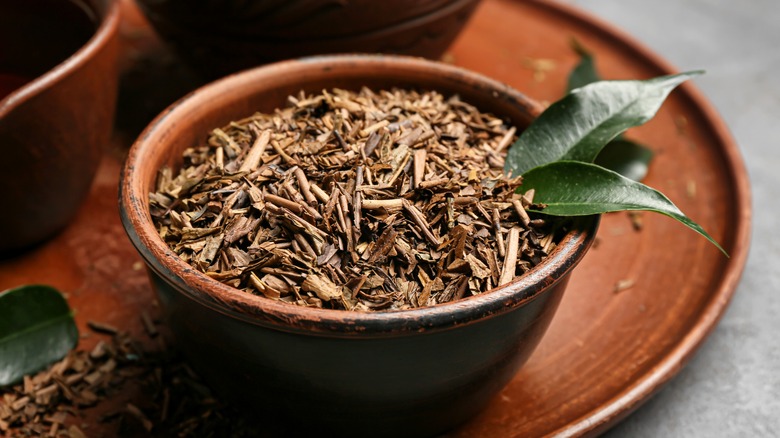The Correct Way To Boil Hōjicha And Avoid A Bitter Aftertaste
Move over matcha; there is a new flavorful green tea in the spotlight — hōjicha. Hōjicha is a Japanese green tea that differs from other versions in one fundamental way: it is roasted. The process of finishing any type of tea involves several steps, including drying and oxidation, among others. Methods vary among manufacturers, so trying teas from various sources will help expand your tea palate.
Hōjicha producers begin by preparing a green tea such as sencha or kukicha; the latter is made from tea plant stems. From there, the tea is roasted over fire. Avid tea drinkers may think, "Hey, other teas like oolong and black are roasted too," but the roasting process is different. Hōjicha is finished before being roasted, whereas other teas are roasted while they are unfinished and still contain moisture.
Curious about the caffeine content of hōjicha? Unlike the strong jolt you get from strong coffee and black tea, hōjicha has a much milder effect, as it contains relatively low amounts of caffeine. This makes it the perfect cup of tea to enjoy during the day and into the evening.
How to prepare a pot of hōjicha
Like all fine crafts, there is an art to preparing the perfect pot of tea, and hōjicha is no exception. And who is better to consult on the matter other than a tea specialist? Catherine Jue of San Francisco's Japanese tea shop Tekuno has a bit of advice for those taking their first steps toward sipping hot hōjicha.
In an interview with Food and Wine, Jue describes hōjicha as "potent yet approachable," making it a perfect green tea to introduce to coffee and black tea drinkers. Typical brewing instructions for hōjicha will call for the water to be boiled for a minute, but Jue says that can create a burnt flavor she finds undesirable. Instead, she suggests brewing for one minute at a lower temperature, between 175-180 F. This advice is especially good when brewing first-harvest hōjicha (tea crafted from the leaves at the start of spring harvest), which tends to have a stronger aroma and fewer tannins.
What will your cup of hōjicha taste like?
If you are still concerned about your tea brewing skills, don't worry; as Jue says, hōjicha's preparation is still pretty forgiving. Flavor will vary depending on the temperature used, but the results can be delectable either way, depending on individual preference. We suggest brewing a few cups until you discover your perfectly balanced brew.
Hōjicha embodies a rich amber color and a full, earthy flavor profile. Some describe it as nutty or chocolatey but without any bitterness. As you might expect, when the tea is lightly roasted and brewed at a lower temperature, the beverage will have a lighter aroma and taste. And more robust flavors of smoke, wood, and roasted rice emerge when hōjicha is more heavily roasted and brewed at higher temperatures.
Not sure what food to pair hōjicha with? It pairs well with sweet and savory meals, so it is suitable for dinner or dessert, and the powder form can be used to sprinkle atop smoothies and sundaes the way matcha often is. No matter how you consume it, hōjicha is an essential tea to add to your kitchen cupboard.


